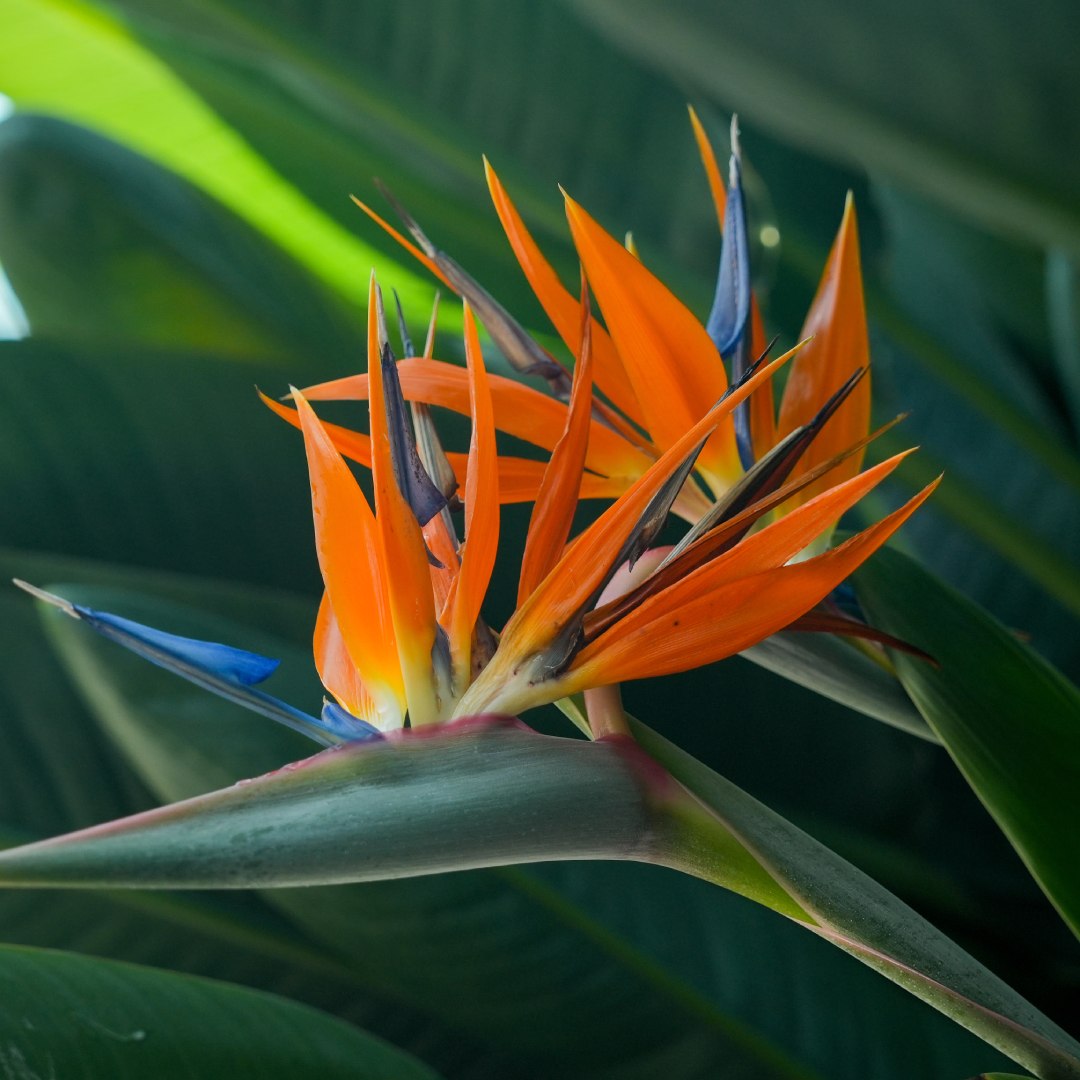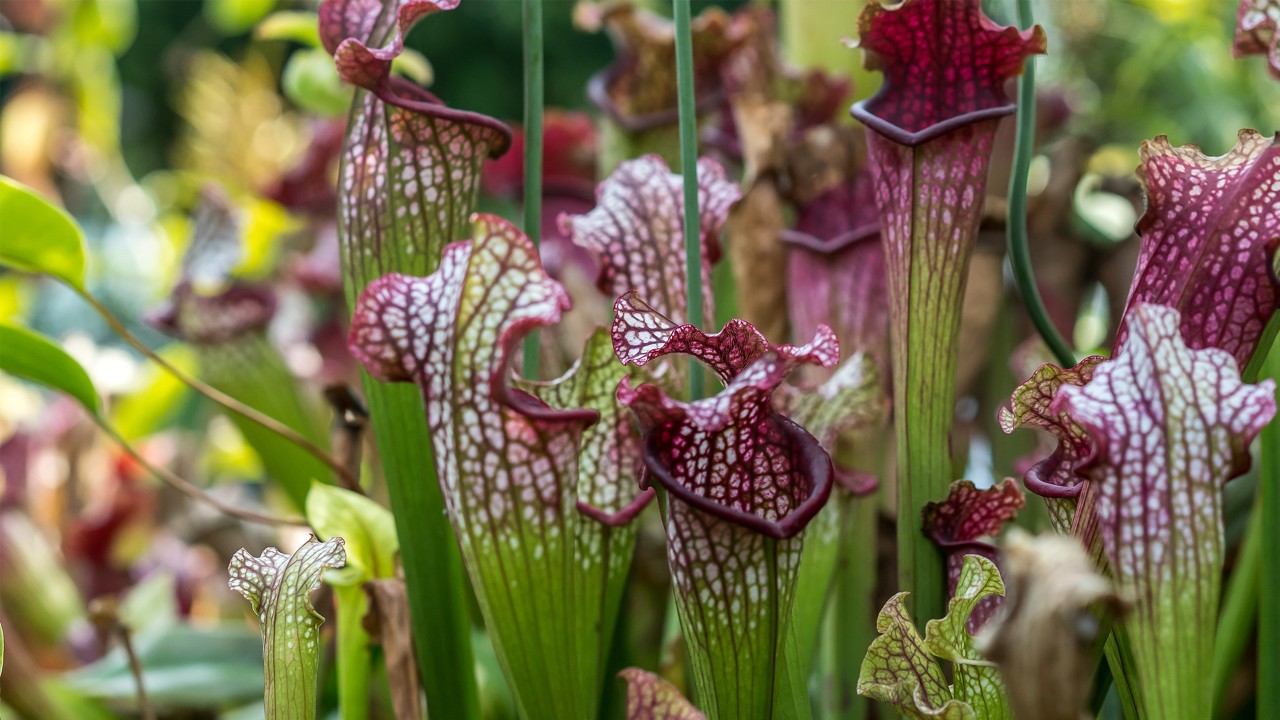 Sarracenia cultivars. Don’t they look striking with their contrasting colours of red and lime green?
Sarracenia cultivars. Don’t they look striking with their contrasting colours of red and lime green?
Together with venus flytraps, the trumpet pitcher plants are also known as an iconic carnivorous plant. I think we all know how the common name came about - each of the modified hollow leaves are shaped similar to a pitcher, with a lip, hollow body, and even some liquid sitting in the bottom!
Sarracenias are native to South and North America, residing in bogs, swamps, wet or sandy meadows, and savannas. As these areas have very nutrient-poor soils, pitcher plants have evolved modified leaves, which photosynthesize and also attract, trap, and digest insects, giving the plants an extra source of valuable nutrients. To attract insects, pitcher plants have evolved hooded, brightly coloured hollow leaves that secrete nectar near the opening lure insects to the top of the pitcher.
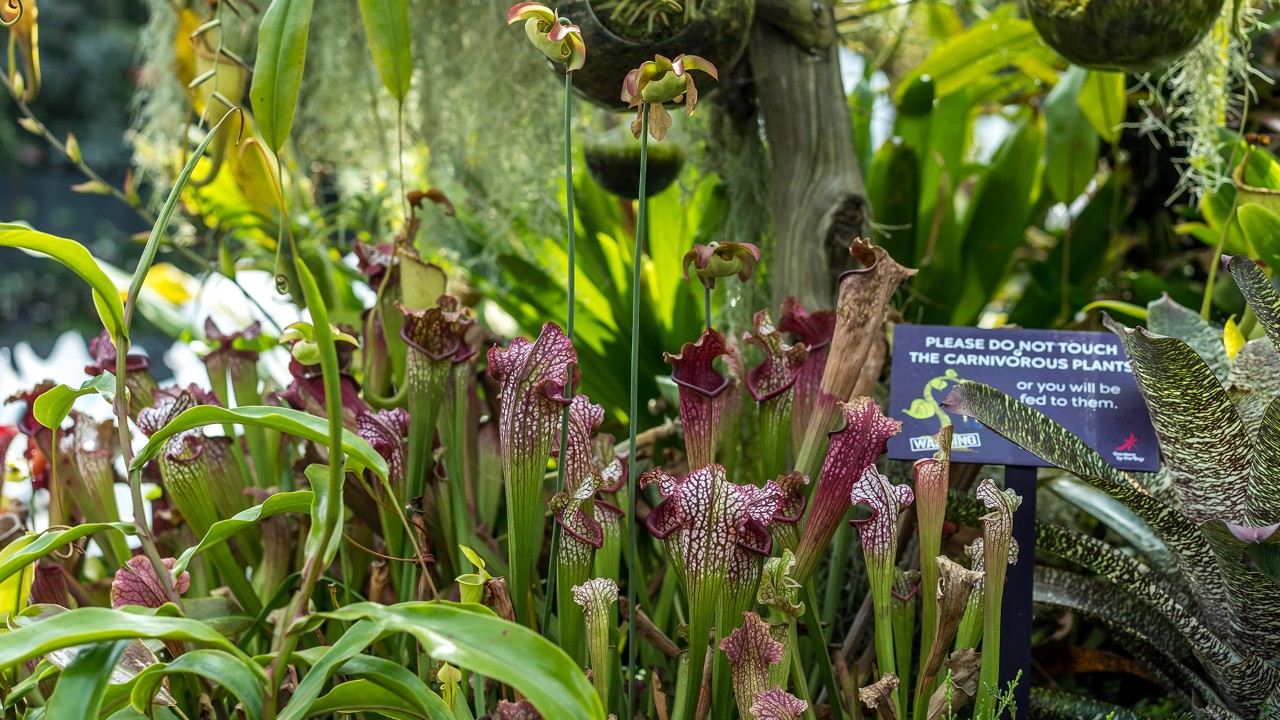 Look at the long, tubular shape of the Sarracenias, it is no wonder that most insects are not able to escape!
Look at the long, tubular shape of the Sarracenias, it is no wonder that most insects are not able to escape!
Most of the time, a trip to the pitcher plant will be one-way as it can be difficult for the insect prey to escape! Usually, flying insects will land on either the pitcher lid or lip, while creeping insects are often tempted by the nectar secreted on the pitcher lip. The slick upper inner lining of the pitcher causes the insects to fall inside as they try to reach the nectar, while downward pointing hairs along the inside of the pitcher prevents insects from escaping back up, thus trapping them at the bottom of the pitcher filled with fluid. This fluid is filled with digestive enzymes secreted by the plant’s digestive glands, which helps to digest the trapped insects into a nutrient-filled broth which the plant then absorbs. And this is how the trumpet pitchers get much of their nutrients!
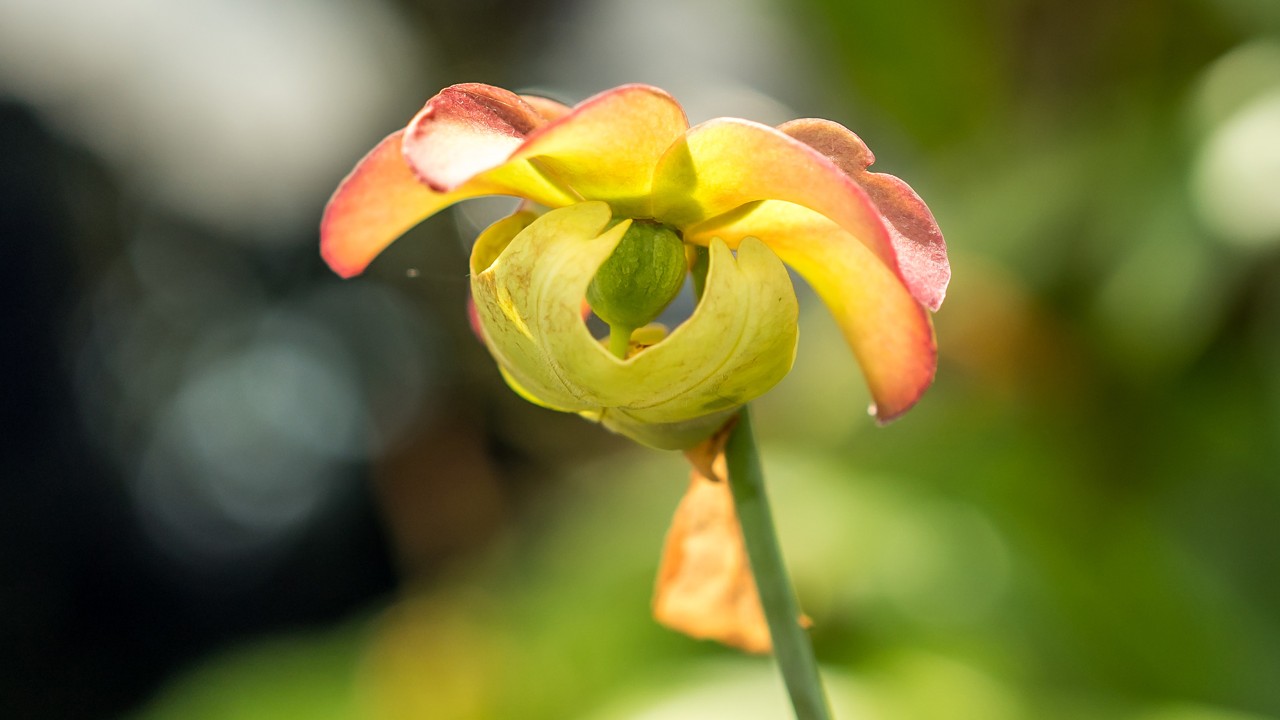 Closeup of a Sarracenia flower.
Closeup of a Sarracenia flower.
I’m sure many of us have seen trumpet pitcher plants, but their flowers do not lose out to the pitchers and are equally quirky-looking! The flowers have a unique look whereby it hangs upside down and resembles an umbrella. Unlike the modified pitcher leaves, the flowers are actually harmless, and act like any regular flowers, allowing insects to get nectar and pollen.
Trumpet pitcher flowers are normally pollinated by bumblebees, sweat bees, and flies. In order to avoid trapping its pollinators, trumpet pitchers separate their insect pollination and insect trapping activities by both time and location. Trumpet pitcher flowers mature and attract pollinators while their leafy pitchers are mostly still developing and not actively attracting and catching prey. The flowers are also held at the top of long stalks far above the trap openings, so passing pollinators will be more likely to be attracted to the pollen and nectar of the flowers as opposed to the nectar secreted by any traps far below!
Come and take a look at these Sarracenias and our other carnivorous plants at The Lost World in Cloud Forest!
Written by: Ng Yu Qin, Senior Horticulturist, Research and Horticulture
Yu Qin is always looking for ways to pick up new skills and put them to use. She spends most of her time with orchids and enjoys learning something new about them every day!
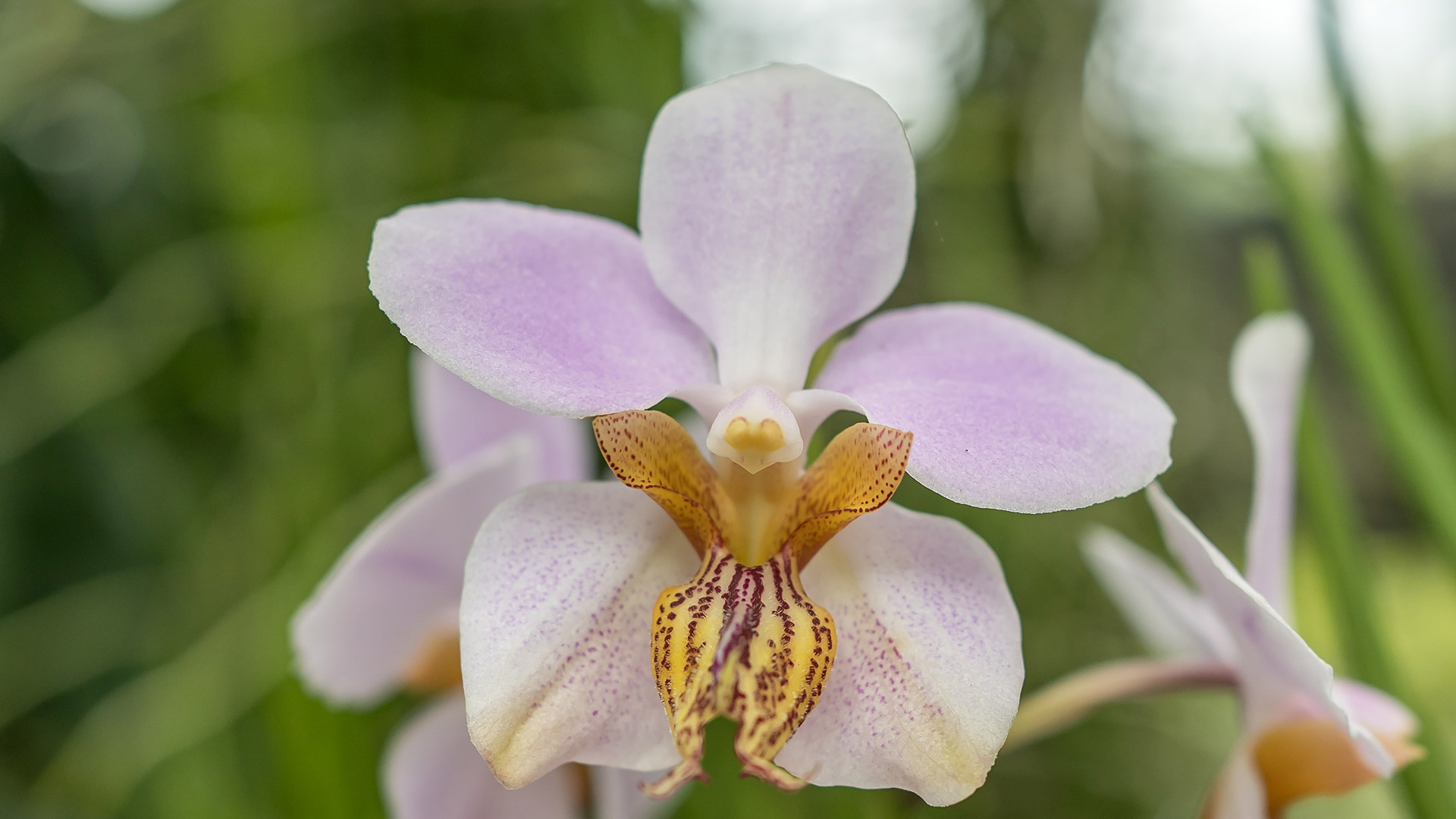
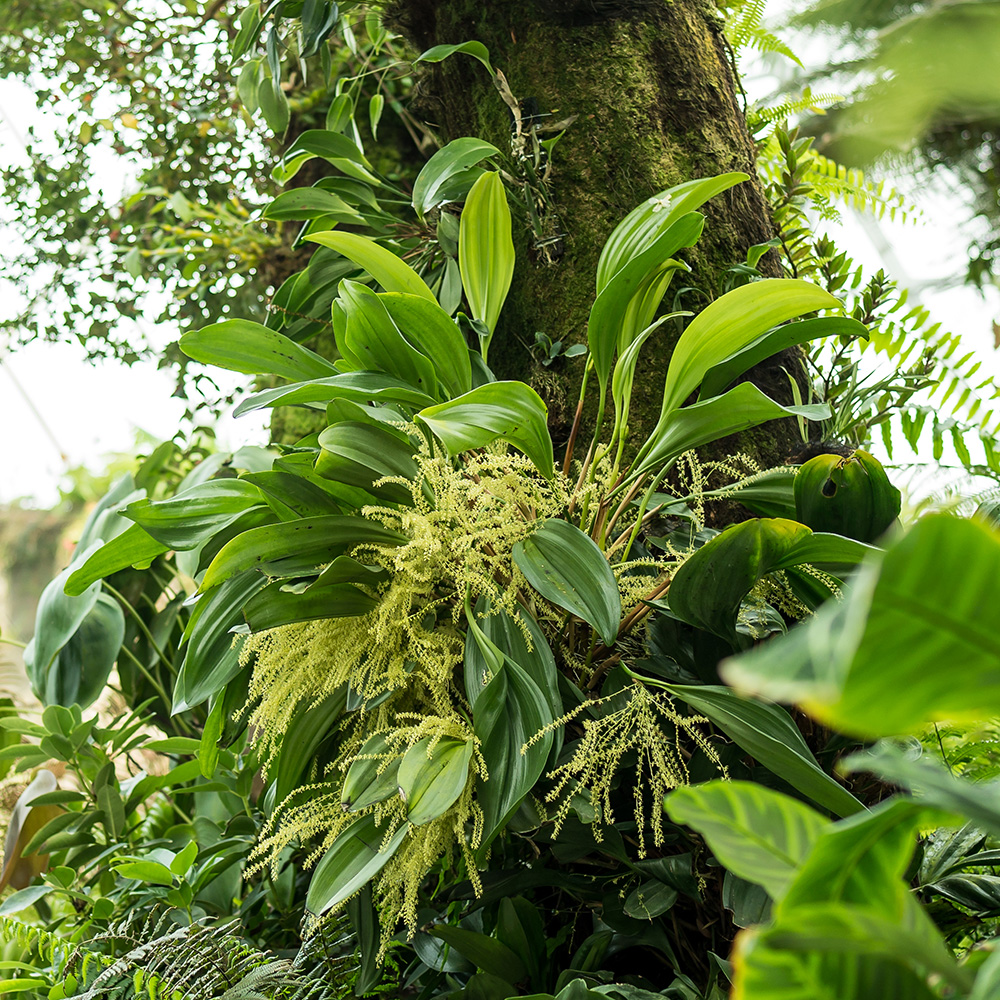
/2023-1000x1000-whatsblooming-raphiaaustralis-image01.jpg)
